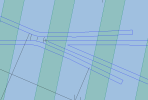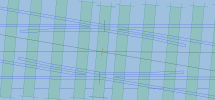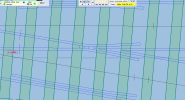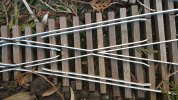playmofire
Registered
On another model railway forum I read that with a diamond crossing the mainline is always the shorter rail. Is this correct?
I have both an LGB and a Piko so I shall do a comparison. Thanks for the confirmation.If this is for a LGB 30 deg diamond crossing, then this is correct. However, the crossing is 'handed', from memory for a right hand point. You have to juggle around with short pieces of track for left hand, or do as I did and cut the longer road to match the shorter one.
This was before PIKO brought out their own version, which doesn't have this issue AFAIK....
Please post your conclusions here so we can see....I have both an LGB and a Piko so I shall do a comparison. Thanks for the confirmation.
Will do.Please post your conclusions here so we can see....







Yes this is the outer line for the monster.Although your flangeways look way out of G1MRA spec (too wide). I understand this might be a compromise for that monster steamer you were building.
First i want to finish my house, i am almost done, total rebuild of a monumental house with all the new demands(energie neutral ect)By the way, we miss your updates, what is the current top priority project (trains of course ha ha!)
I have to ask why we look at G1MRA standard for G Scale, if I were modelling in OO9, the I would be using 4mm standard not N Gauge standard, again modelling in O16.5 I would be using O Gauge standard, and not OO/HO, so for G Gauge which is G3 narrow gauge why are we not looking to G3 standard.Right on Igor!
Although your flangeways look way out of G1MRA spec (too wide). I understand this might be a compromise for that monster steamer you were building.
By the way, we miss your updates, what is the current top priority project (trains of course ha ha!)
Greg
Not really the gauge and standard to which you build your crossing is just as important as the crossing itself.Bit of thread drift starting here.
Probably for robustnessI have to ask why we look at G1MRA standard for G Scale, if I were modelling in OO9, the I would be using 4mm standard not N Gauge standard, again modelling in O16.5 I would be using O Gauge standard, and not OO/HO, so for G Gauge which is G3 narrow gauge why are we not looking to G3 standard.
Unfortunately that statement could be said for most things these daysrelax the need for good standards
